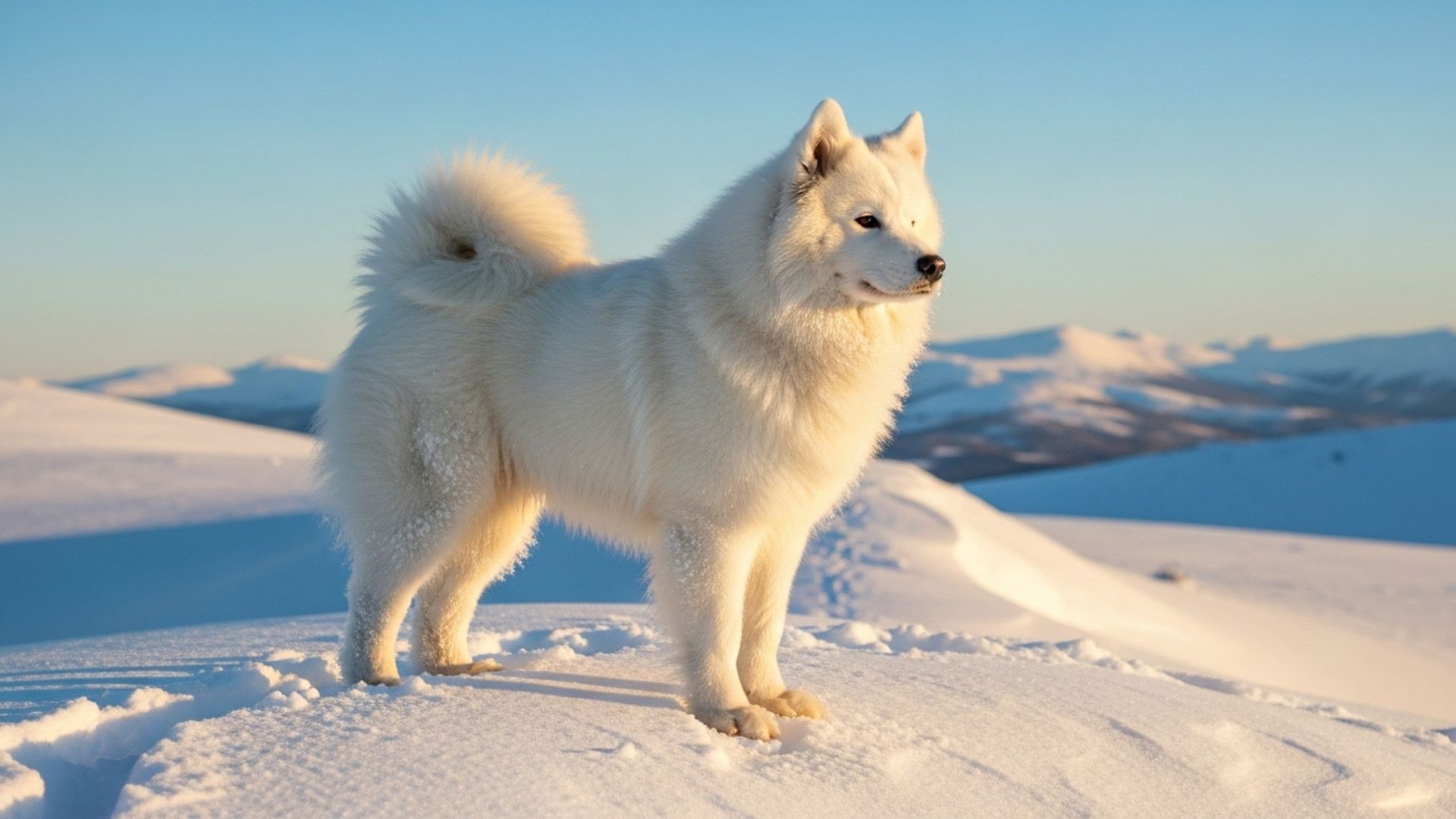Cold air has a way of revealing truth. In snow and ice, every sound sharpens, every breath rises like a small cloud, and every movement demands purpose.
Some dogs are shaped for this kind of world. Their instincts come alive the moment paws touch frost. Their strength feels different in winter terrain, not loud or exaggerated, but measured and steady. These dogs carry an understanding of cold that goes beyond survival.
Their bodies absorb the wind, their senses follow shifting trails in white landscapes, and their confidence grows where others hesitate. There is beauty in watching them move, a rhythm that belongs to snowfields and frozen mornings.
Their connection to winter is natural, almost ancient, as if they remember stories the ice once kept.
Key Takeaways
Some dogs meet winter with a calm confidence that makes cold weather seem simple rather than harsh.
Huskies and Samoyeds handle long hours in snow with an ease that comes from generations of work beside people who lived in freezing climates.
The Bernese Mountain Dog and Akita follow the same pattern of steady power and dependable warmth, moving through icy paths without losing their focus.
By the time all seven breeds reveal their strengths, it becomes clear why winter feels like the season where they truly belong.
Remarkable Dog Breeds That Excel in Snow and Ice
1. Siberian Husky

The Siberian Husky is known for its steady endurance, especially in long snowy stretches where many breeds would slow down. Its energy feels effortless, and that natural rhythm helps it travel across icy ground with ease. This ability made the Husky reliable in places where winter is part of daily life.
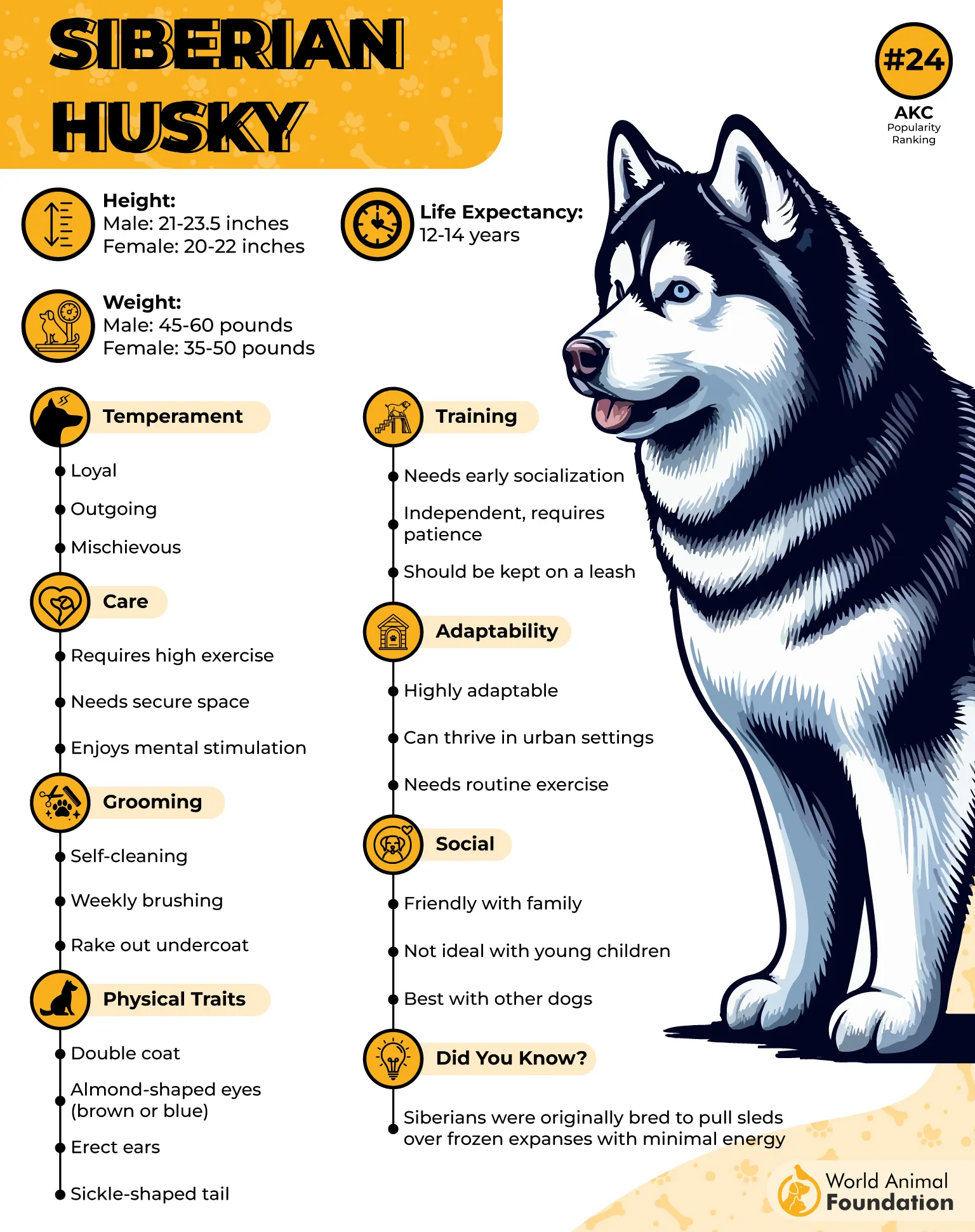
Coat and Cold Adaptation
The thick double coat acts like a natural shield and keeps the dog comfortable even in freezing temperatures. According to the AKC, seasonal shedding can be heavy, especially during spring and fall when the coat changes. This feature plays a big role in how well they function in snowy climates.

Steady Focus in Demanding Landscapes
Huskies often travel with impressive consistency, which is valuable in regions where the terrain is covered in ice for months. Their ability to keep pace without slowing helps maintain progress when conditions shift. This steady rhythm supports work that involves travel across remote frozen areas.
2. Alaskan Malamute
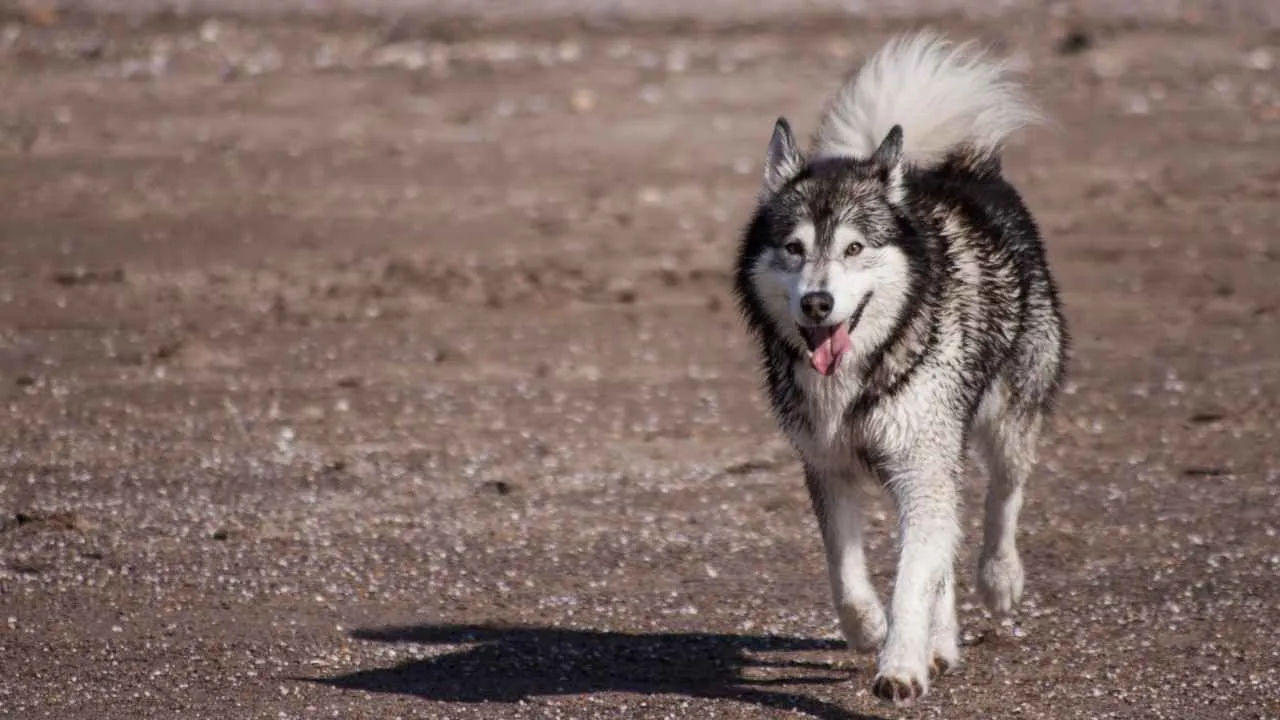
The Alaskan Malamute carries a calm confidence that shows in the way it tackles physical work. Sled teams once relied on these dogs to haul heavy loads across frozen routes, where endurance mattered more than speed, as Britannica mentioned.
Built for Harsh Winters
Their dense double coat keeps them insulated even when temperatures drop far below freezing. The native Mahlemut people trusted them for survival, counting on them to hunt seals, pull gear across snow, and stand guard against polar bears.
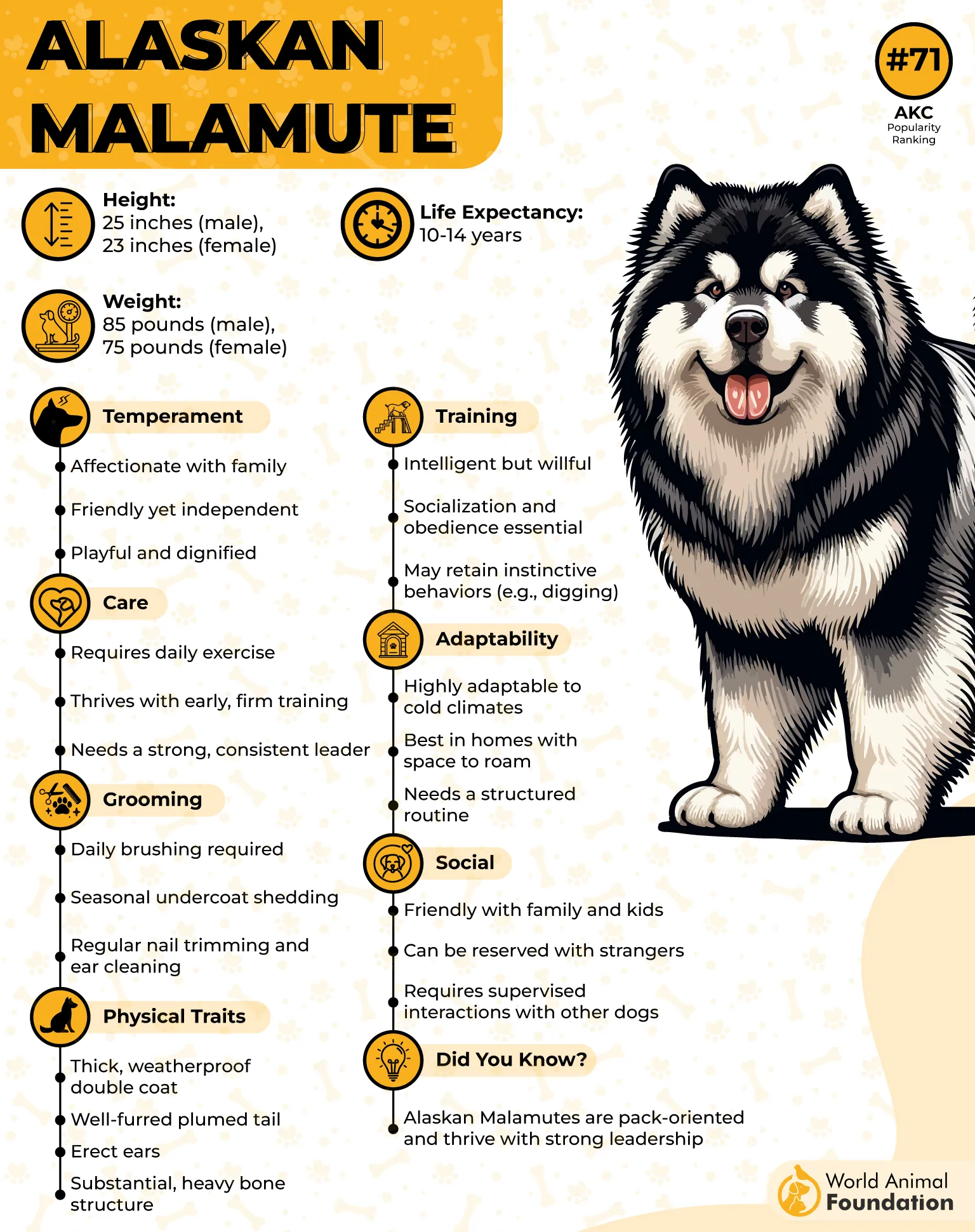
Bonded Yet Independent
Malamutes stay close to their humans but think and problem-solve on their own when working outdoors. This independence helps them manage tasks without constant guidance, especially on vast snowy routes. Their balanced temperament supports both companionship and steady winter work.
3. Samoyed

The Samoyed is famous for its bright expression, often described as a natural smile that never leaves its face. This friendly nature plays a big role in how well it handles long hours outdoors because a positive temperament makes demanding climates easier to navigate.
Built for Ice-Cold Terrain
Their double coat traps warmth and forms a barrier against wind, making them dependable workers in snowy regions. Generations spent beside nomadic groups shaped their stamina, allowing them to move through deep snow without slowing down.
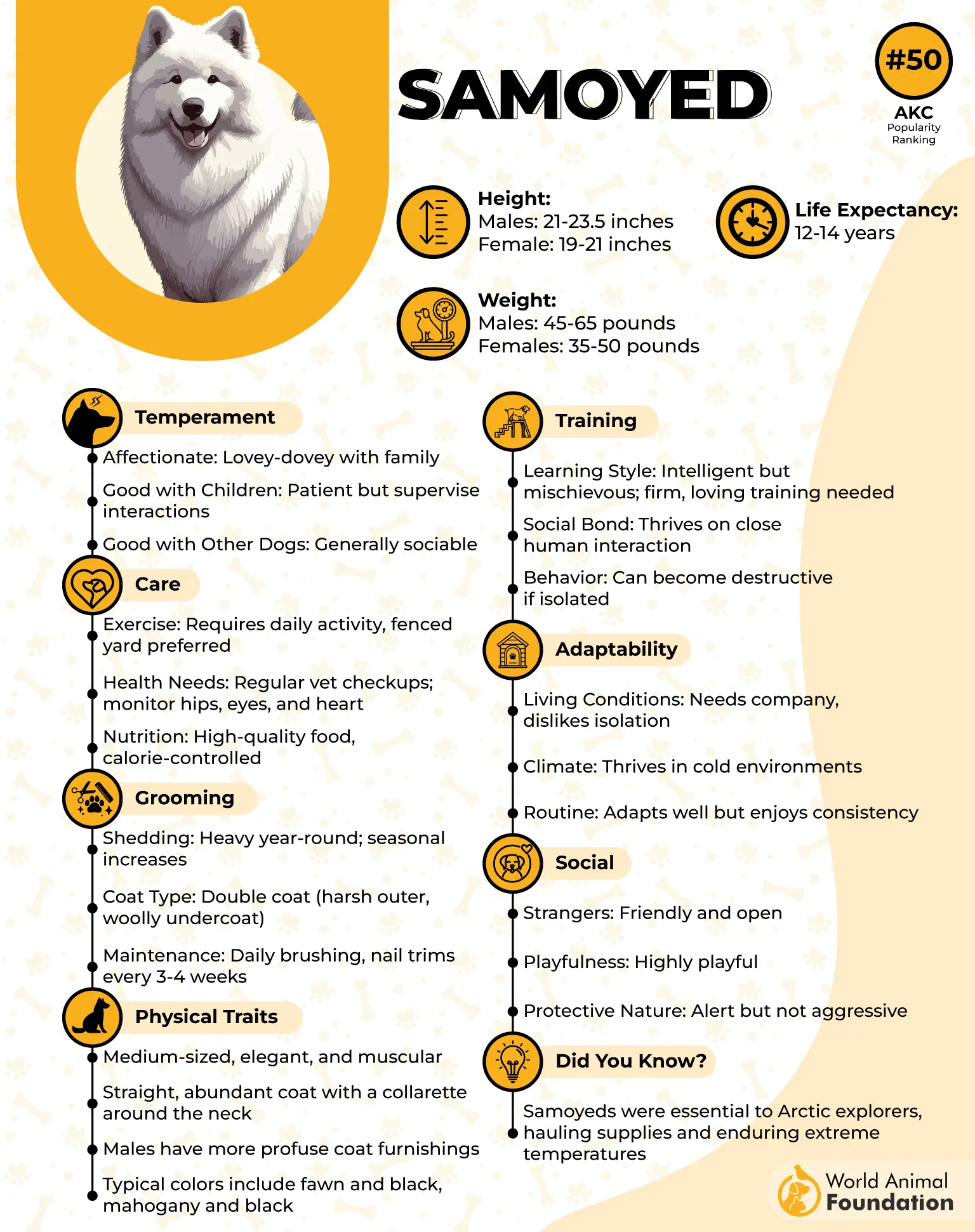
Reliable Helpers in Harsh Winters
Samoyeds were known for walking alongside people during bitter winters, creating a steady rhythm that helped maintain warmth and morale. Their cooperative nature makes them comfortable working in groups, which is helpful during tasks involving sleds or supply travel.
4. Norwegian Elkhound
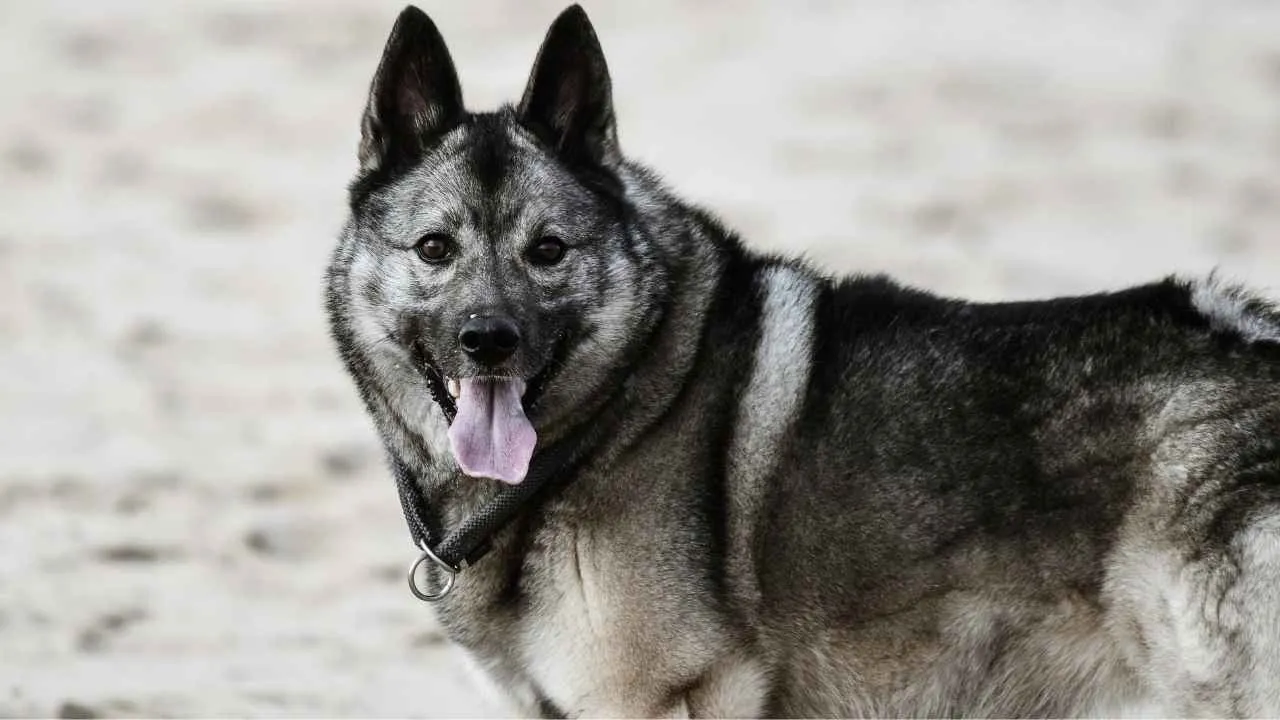
The Norwegian Elkhound is known for its steady confidence, which shows clearly when moving across frozen paths. Its thick double coat holds warmth well, keeping the dog comfortable in low temperatures. This natural insulation supports long hours outdoors without losing energy or alertness.
Built for Demanding Cold-Weather Tasks
Their sturdy frame helps them navigate icy ground with sure footing, a trait valued by people who rely on dependable movement in winter conditions. They stay focused on their surroundings and respond quickly when something shifts in the environment.
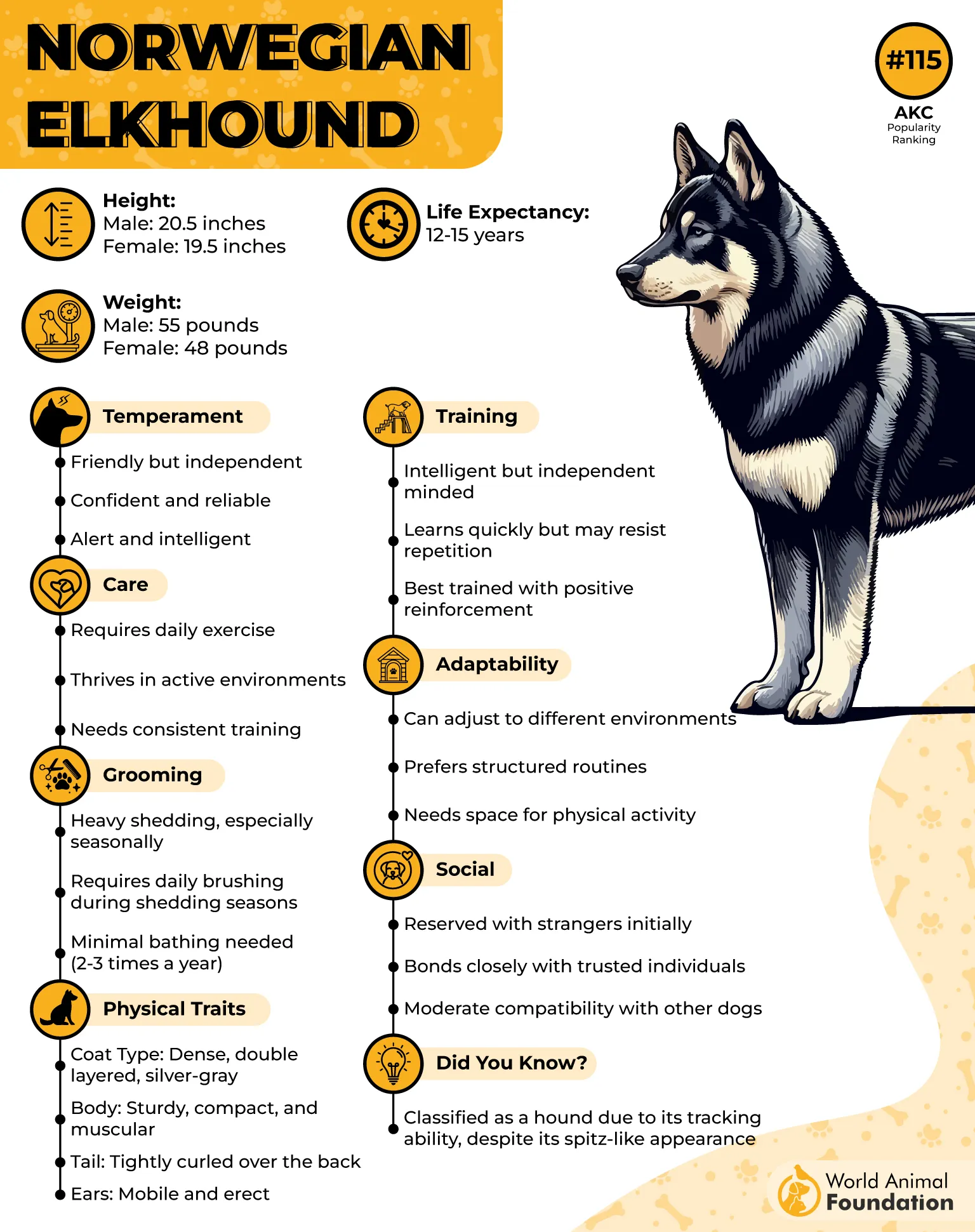
Alert Nature with a Strong Chasing Instinct
Elkhounds have a long history of chasing game, which explains why they may rush after smaller animals, as PetMD writes. This instinct shows up even in calm settings, so outdoor time calls for a leash or a secure area.
Their sharp attention makes them helpful in snowy regions where visibility can change quickly.
5. Bernese Mountain Dog
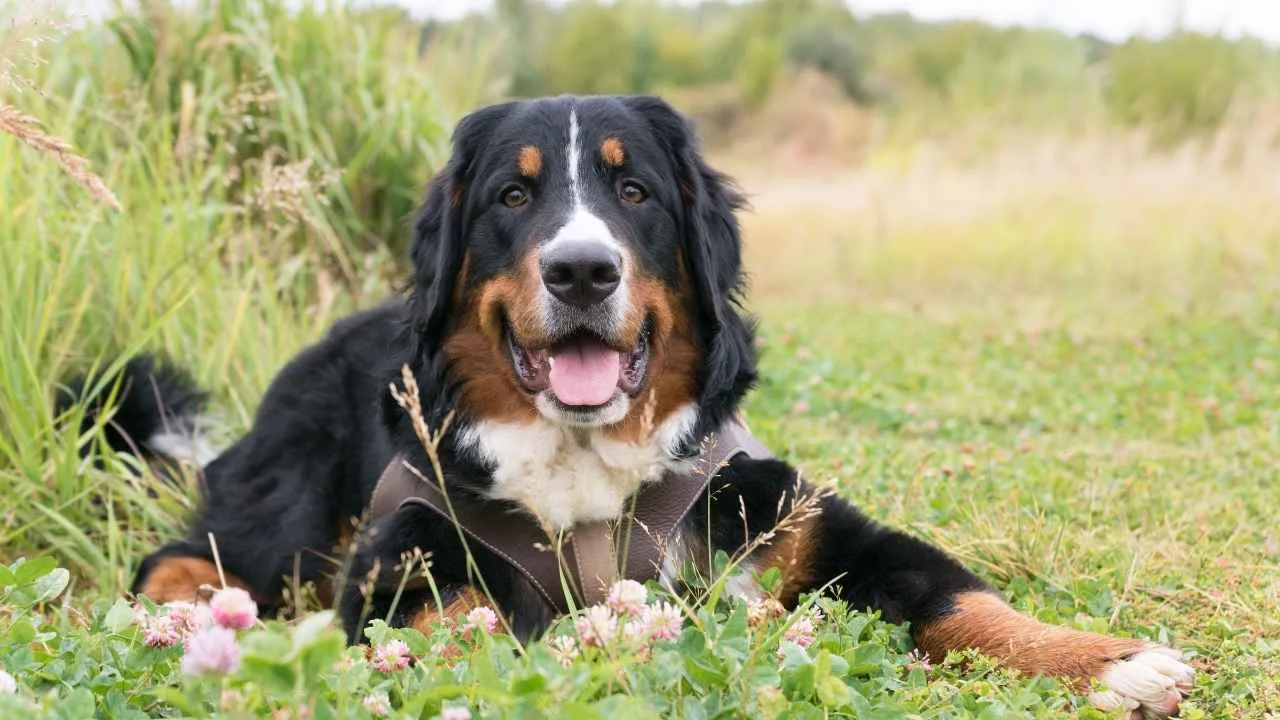
Bernese Mountain Dogs are known for their steady strength, which makes them dependable partners in demanding climates. Their thick coat shields them from snow and moisture, keeping them comfortable outdoors for long hours. Their calm nature helps them stay focused during tasks in icy conditions.
Built for Outdoor Challenges
They enjoy being active in wide outdoor spaces, especially where the air is crisp and the ground is cold. Their playful energy adds to their usefulness, as they stay motivated even when temperatures drop. This gives them a reliable presence during winter work.
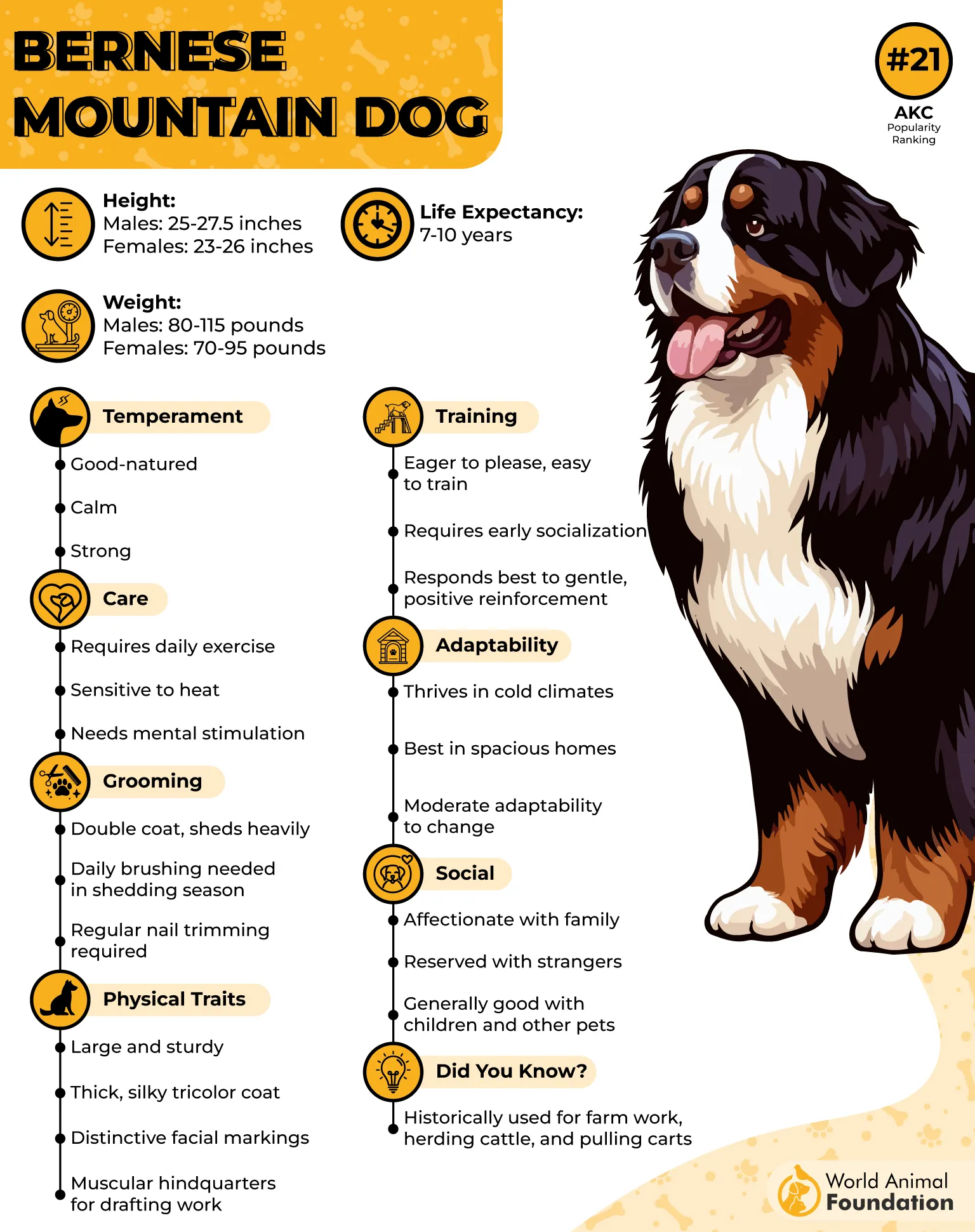
Gentle Nature Around People
Their friendly character gives them a soft touch around families while still being capable in cold environments. They bond easily with people, which makes them reassuring companions on chilly days outdoors. This balance of warmth and strength adds meaning to their role in winter settings.
6. Keeshond

The Keeshond has a long history of being close to people, and this closeness has shaped a dog that stays alert and responsive in any environment. Its thick double coat works like insulation, holding warmth even when temperatures drop sharply.
Coat Built for Cold-Weather Tasks
Their fluffy outer coat and dense undercoat trap heat efficiently, giving them comfort in both snow and freezing air. This structure once helped them stay warm near icy canals, which shows how well they tolerate low temperatures today.
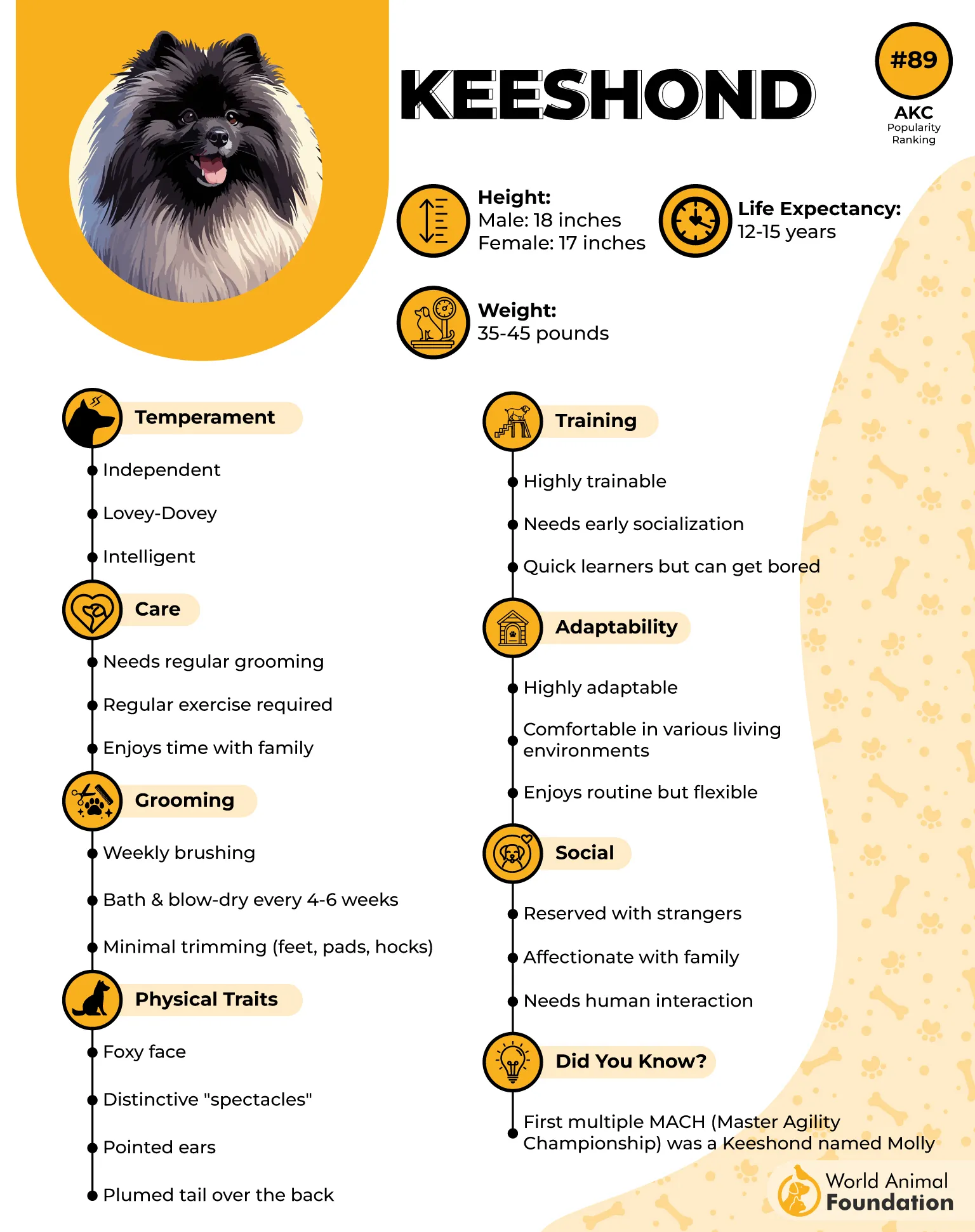
Movement That Suits Wintry Terrain
Keeshonden handle snowy paths with surprising steadiness, using their compact build to stay balanced on slick ground. Their stride remains light, helping them move confidently without tiring too quickly. This makes them suitable for families living in regions where winter lasts longer than a season.
7. Akita
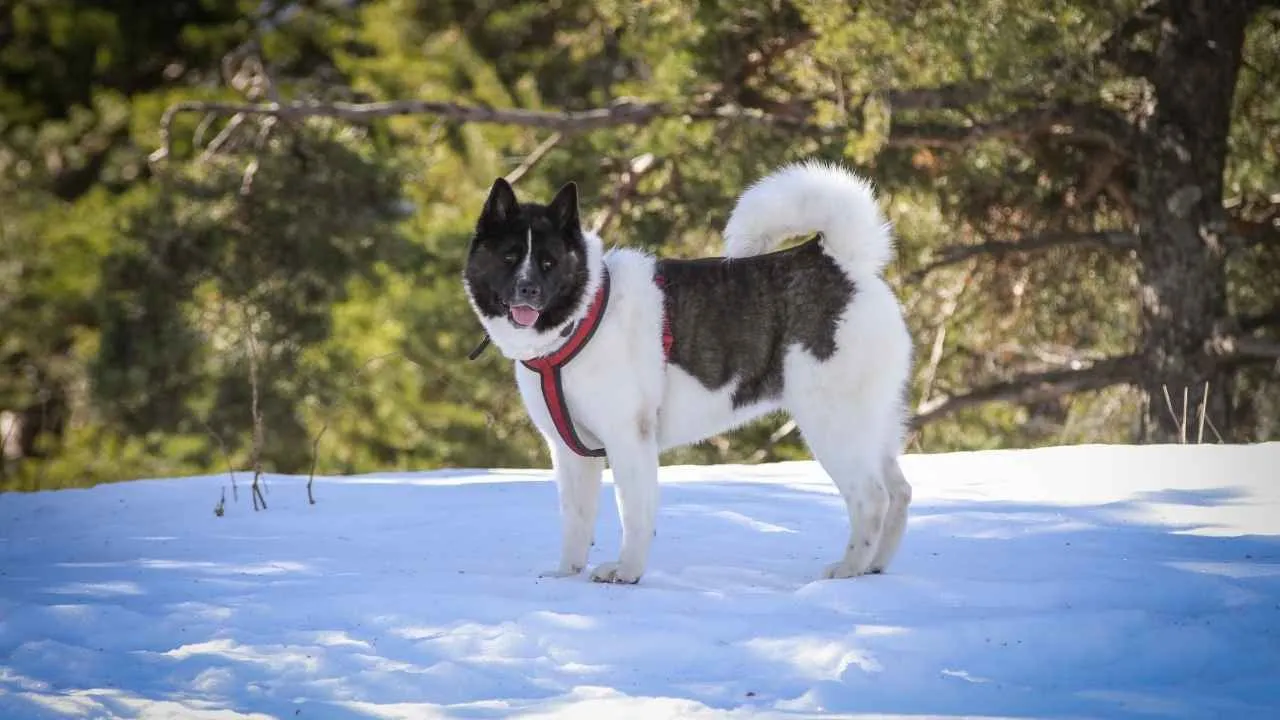
The Akita is known for its deep sense of duty and its calm confidence, qualities that stand out the moment you see one. This breed carries cultural significance in Japan, where it is cherished as a national treasure.
Its thick double coat gives strong insulation, allowing it to stay focused even when temperatures drop in snow-covered regions.
Protective Instincts in Cold Conditions
Akitas form close bonds with their families and show a steady awareness when something seems out of place. This thoughtful nature helps them stay attentive in wide, quiet landscapes where snow can muffle sound. Their alert posture and measured reactions make them dependable in winter settings.
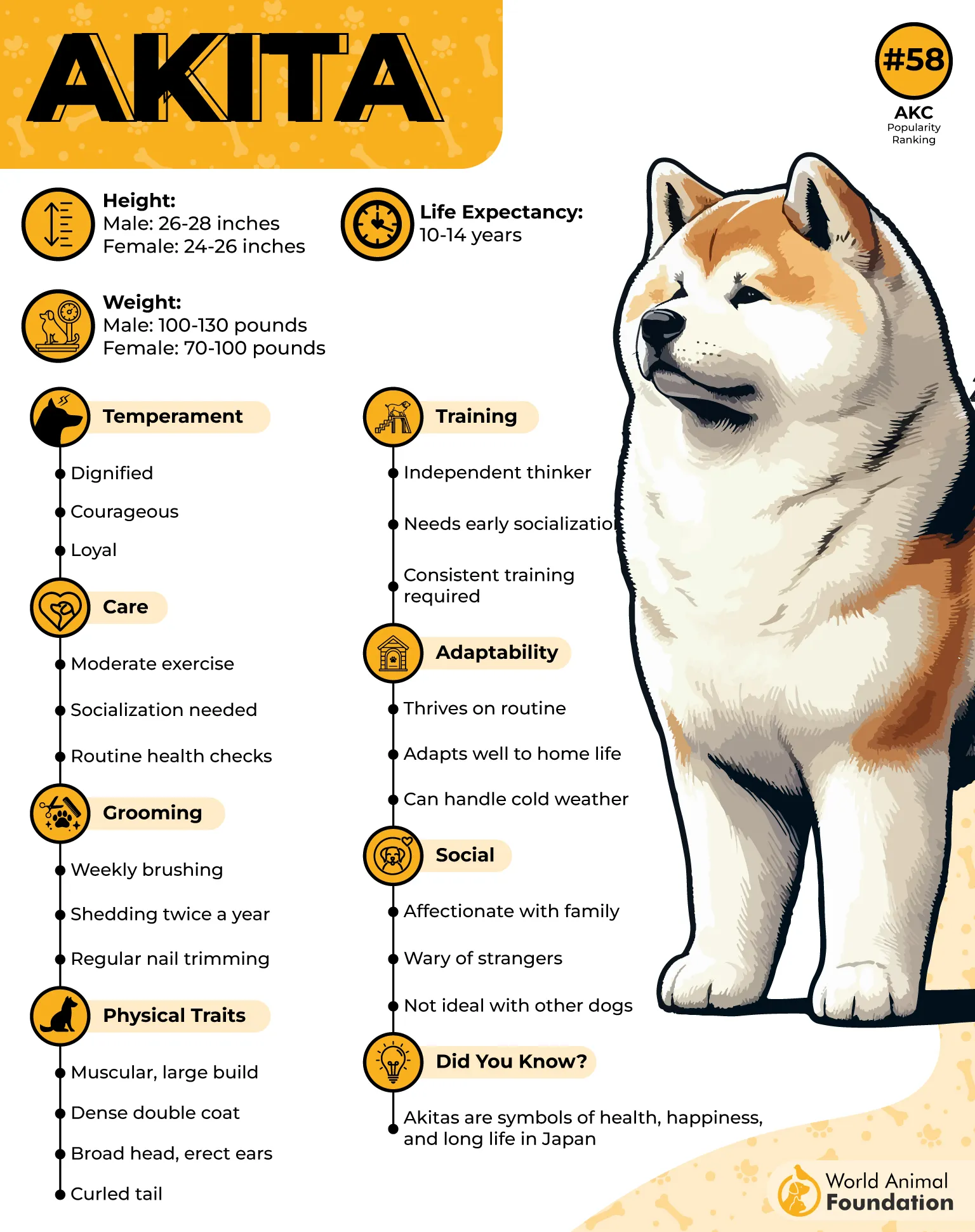
Quiet Confidence Around Their People
Though often reserved around strangers, they show warmth and loyalty to those within their circle. That connection encourages them to stay close, especially during long walks in snowy areas. Their calm endurance creates a reassuring presence during winter activities.
Conclusion
Reaching the end of this journey shows how closely these dogs connect to winter. Their movements, instincts, and calm strength reveal why many snow dog breeds feel most at home in wide white landscapes. They stand steady among the cold-weather dogs that shaped history through work and companionship.
Their stories reflect the quiet knowledge of animals raised in cold climates, where awareness matters as much as endurance. They stay balanced even in cold temperatures, which explains why they are trusted as cold weather breeds in demanding regions.
These qualities also make them meaningful partners for active families who enjoy long winter days outdoors.


